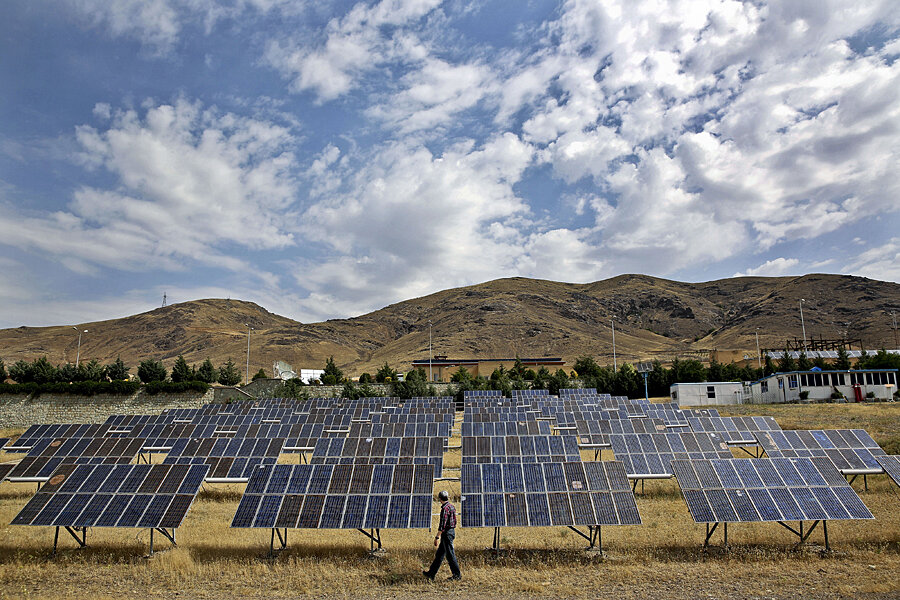Climate change solution: Scrap subsidies, fund innovation
Loading...
Mark your calendars. November 30, 2015 is international climate D-Day. Representatives from 196 countries will meet in Paris for the 21st session of the Conference of the Parties to complete negotiations on a new international climate agreement to replace the Kyoto Protocol, which ends in 2020. Unfortunately, in the lead up to the negotiations there have been few new suggestions that deviate from the norm, signaling that Paris may be doomed to retread the tried-and-failed carbon targets and subsidy policies that will produce good feelings but poor results.
The Intergovernmental Panel on Climate Change (IPCC) paints a dark picture of how severe the problem is. Staving off a catastrophic rise in global temperature requires cutting carbon emissions 40 to 70 percent by midcentury, followed by precipitous cuts to near-zero thereafter. French Foreign Minister Laurent Fabius connected the IPCC’s findings to the upcoming Paris negotiations best: “We have 500 days to avoid climate chaos.”
Regrettably, international climate talks, as well as climate policy generally, have a poor track record. The Kyoto Protocol, which set a 5 percent reduction target below 1990 levels for industrialized countries between 2008 and 2012, failed outright: global emissions increased 7.5 percent and leading emitters like the United States didn’t ratify out of economic cost concerns and China was excluded from the targets entirely as a developing country. Kyoto’s results would have been even worse if not for the global economic recession artificially depressing energy consumption.
Looking at the current state of negotiations, it is hard not to get déjà vu. The IPCC found that the 2020 carbon targets voluntarily pledged by many countries as a prelude to a new international agreement, “…correspond to scenarios that explicitly delay mitigation.” In other words, most countries have unequivocally vowed to not cut carbon emissions in any meaningful way through at least 2020.
While unsettling, this flash of truth-telling points to the real problem: international climate policy is only as good as the policies and clean energy technologies underpinning national climate strategies. And national climate strategies are severely limited by political resistance to cutting carbon at the cost of economic growth, prosperity, and energy access.
Still, if we can’t get there by setting limits on carbon emissions, then the hope is that nations can subsidize clean energy to market domination. However, despite the fact that according to the Pew Charitable Trusts global clean energy subsidies reached $254 billion in 2013, solar PV and wind power represent just 3 percent of global electricity use.
Certainly subsidies have helped drive down the cost of solar and wind power, though largely because of mercantilist policies in China and feed-in tariffs in Germany. But most of the world appears to be reaching its limits on just how much tax payer dollars they are willing to throw at otherwise market uncompetitive energy sources. Indeed, most developed countries are scaling back subsidies because of cost concerns, including the bulwark of climate policy, Germany.
The unfortunate reality is subsidies are having no net impact on reducing global emissions, because clean technologies are simply not cost and performance competitive with fossil fuels absent government largesse in most cases, particularly when factoring in the high cost of energy storage.
Global policymakers cannot seriously convene in Paris in 2015 and pledge to continue the same target and subsidy approach that is not getting us where we need to be fast enough. It’s time for a new approach that supports the goal of getting low-carbon energy technologies cheaper than fossil fuels everywhere without subsidies. And the only way to do that is with more innovation. Unfortunately, current approaches do little to spur much needed disruptive innovation. As a result, Paris negotiators should adopt two reforms.
First, negotiators can jump start an innovation strategy by agreeing that high-income and emerging countries can meet their commitment to international obligations either by adopting carbon targets or by increasing clean energy research, development and demonstration (RD&D) investment to an agreed upon share of GDP (ideally around 0.1 percent of GDP).
According to the International Energy Agency, the world underinvests in RD&D by at least $70 billion annually; or a mere 13 percent of what it does to subsidize fossil fuels. An RD&D target is a simple way to incentivize countries to support the brightest scientists, engineers, research, and breakthrough ideas instead of naively hoping we can solve climate change with existing, expensive technologies.
Second, rather than financing deployment and efficiency projects that marginally displace carbon emissions, international institutions like the World Bank and the Clean Technology Fund think bigger and engage low-income countries as “test-beds” for piloting and demonstrating next-generation technologies, particularly in countries where fossil fuels are expensive or inaccessible.
The Paris 2015 climate negotiations offer a unique opportunity for new policy ideas and could be a turning point in the world’s efforts to address climate change. But policymakers must choose whether the world simply recommits to unsuccessful approaches or changes course. Here’s to hoping the results don’t leave us destined for “climate chaos.”
Matthew Stepp is executive director of the Washington-based Center for Clean Energy Innovation.







